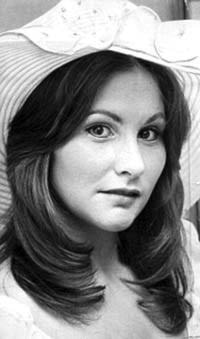Mike Selby
"What about," said Gerald L. Early, although nobody really heard him. A visiting professor from Washington University, Early was attending a crowded editorial board meeting at Harvard University's Press. "What about," he repeated a bit louder, "Linda Lovelace's 'Ordeal?'"
Stunned silence.
They heard him that time.
As Greil Marcus, who was chairing the meeting, would later report, "Everyone in the room knew who Linda Lovelace was. But nobody had any idea what 'Ordeal' was."
Marcus — an American Studies Professor at Berkeley — was editing (or trying to edit) 'A New Literary History of America.' This book, commissioned by Harvard University, would capture the literary experience of America from 1507 (when the word 'America' first appeared on a map) up until the country elected its first African-American president. The book was to have 200 essays contributed to just as many contributors, commenting on the truly American made works, from Longfellow and Melville to Toni Morrison and Chuck Berry. With all the reviews arranged chronologically, the book would be a good balance between the old and the new.
All was going well too, until Marcus came to the year 1936 — the year Margaret Mitchell's "Gone with the Wind" was published.
His first choice to review Mitchell's iconic book was Lee Smith — a 68-year-old Southern writer, author of "The Devil's Dream" and "Mrs. Darcy Meets the Blue-Eyed Stranger." Although flattered that he thought of her, Smith's reply unsettled Marcus; she hadn't read the book. He then turned to Bobbie Ann Mason, another elderly woman of the South, this one the author of "Shiloh" and "In Country." Mason told Marcus she hadn't read it either, but she had seen the movie.
Disillusioned, Marcus called upon Carolyn Porter, a colleague of his at Berkeley who was a Faulkner scholar. "Have you read 'Gone with the Wind'?" he hesitantly asked. "Read it?" replied Porter with a laugh. "I've memorized it."
With his faith restored, Marcus turned back to the question which had shocked the editing committee into silence: Does Linda Lovelace's "Ordeal" belong beside "Gone with the Wind?"
Gerald Early seemed to think so. "Ordeal" was Lovelace's autobiography, and "the memoir has been the dominant literary genre during the past 40 years; 'Ordeal' was the prototype, the most sensational, the hot centre of what storytelling in America in the present age is."
Ann Marlowe, an award-winning memoirist herself and war correspondent, ended up reviewing "Ordeal" for the book. She found it to be a "fascinating artifact of its time." Not the least being in that it is only one of four autobiographies written by Lovelace.
The first, "Inside Linda Lovelace," appeared in 1974, with Lovelace glamourizing the world of pornography on every page and explaining how much she loved the work. She followed this with "The Intimate Diary of Linda Lovelace," which also came only months later. "Ordeal" didn't appear until 1980, and this time Lovelace did a complete 180. Here she claims her first book was a complete fabrication; full of lies and basically written by her abusive husband who forced her into pornography at gunpoint. While vehemently denying everything she had written in her first book, she somehow forgot to even mention her second one.
"Ordeal" is also the first of what would become an entire industry of abuse memoirs, where celebrities who seemed to have glamorous and exciting lives write in great detail how they really have horrifically sad lives; one's filled with every type of abuse imaginable. Yet — as Ann Marlowe states in her review — "Ordeal" doesn't read as sad. In fact, the author's pain is written with a type of "autistic blankness," making Marlowe question whether or not any of the book is true.
To further muddy the waters, the book was ghostwritten by Mike McGrady, famous for writing the hoax novel "Naked Came a Stranger." Lovelace's final work, "Out of Bondage," appeared in 1986. Here too she renounces her previous books, yet this too was co-written with McGrady. Which one was the true one? Where any of them?
And this, in the end, is why Greil Marcus did indeed include "Ordeal" in "The New Literary History of America." It belonged with the portrait of all the other truly American literary works, and Marlowe's serious review of it, became one of the most popular essays out of all of them.
Mike Selby is Reference
Librarian at the Cranbrook Public Library
